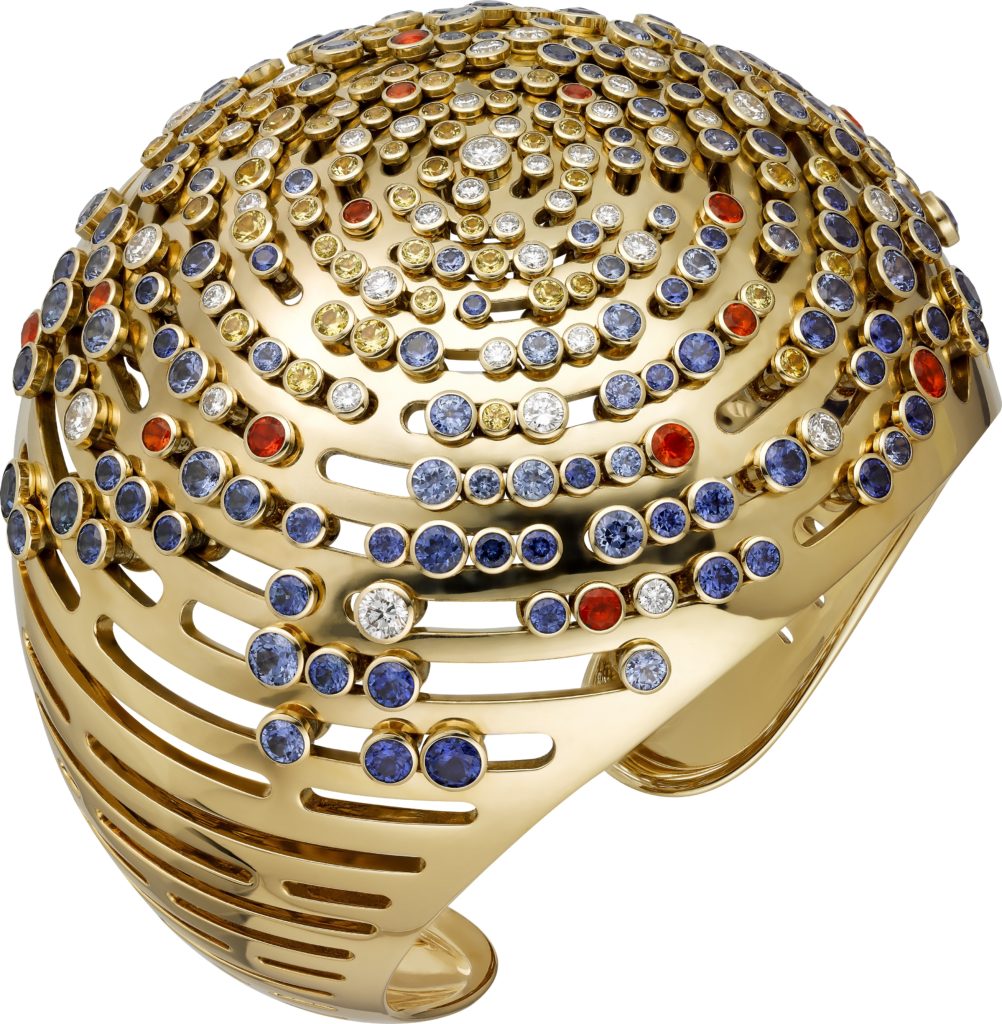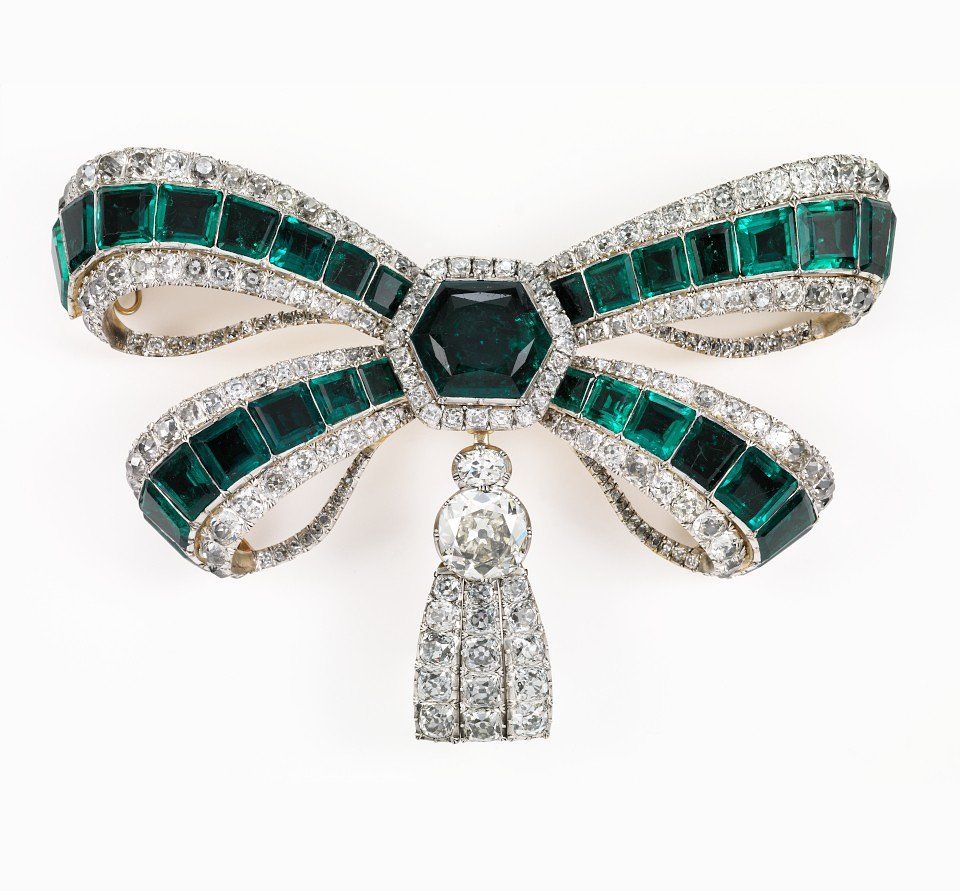Following the article on the inauguration and opening of the private Vekselberg Museum, I was asked if it would be possible to do a summary on the eggs of the Fabergé House. I will therefore, as far as possible, gather here what is known about these pieces.
Historically, the tradition started in 1885 with an order from Tsar Alexander III who wanted to offer a gift to his wife Maria Feodorovna. It is not clear why he decided to have an egg made or what his exact inspiration was. It seems that it was to celebrate the 20th anniversary of his engagement. It is known that the Tsarina’s aunt, Princess Wilhelmina Maria of Denmark, had an egg from the 18th century that had fascinated Maria Feodorovna as a child, so perhaps this was the starting point. In any case, the empress was so taken with the gift that she ordered an egg every year. The tradition continued with Nicholas II until 1917. During the Revolution, the jeweller’s property was seized and he was forced to leave for Switzerland. He died there three years later, in 1920, at the age of 74.
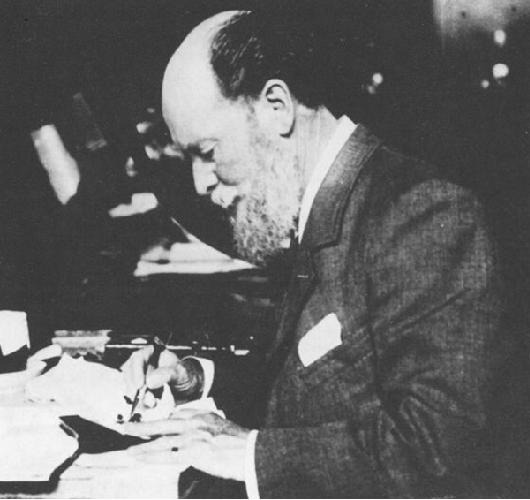
Pierre-Carl Fabergé at work, photo around 1900. Photo: Fabergé SA

Workers at work in the workshops of the Fabergé company in Russia, around 1900. Photo: Fabergé SA
Although he did not make eggs exclusively for the imperial family, the latter was his main client for this type of exceptional order. Nevertheless, not all the pieces are signed Fabergé. Many are hallmarked M. Perchin, who was one of the goldsmiths working for the Fabergé house between 1886 and 1903 (the date of his death).
In addition to these eggs, the Fabergé company produced a number of jewels with this motif (mainly pendants) and small boxes always in the same shape.

Example of a pendant produced by Fabergé: gold, enamel and diamonds (1903), 2.2 x 1.4 cm. Photo: The Royal Collection
Legends: FI: Imperial Family, FK: Kelsch Family, A: others
– 1885: “Egg with a chicken” – Vekselberg Collection in St. Petersburg (FI)
“Blue egg” (1885 – 1891) – Private collection not located, possibly in France (A)

“Egg with a hen”, photo : Forbes Collection (Current Vekselberg Collection) via Fabergé.com
– 1886 : “Egg with a hen in a basket” – Lost (FI)
“Resurrection Egg” (1886 -1895). Could be, in fact, the surprise “Regency” or so-called “Renaissance” egg of 1894 – Vekselberg Collection in St. Petersburg (A) or (FI)

The “Renaissance” egg next to the so-called “Resurrection” egg. This one could in fact be the surprise of the “Renaissance” egg. Photo: Reuters
– 1887: “Egg with snake clock” – Collection Albert II of Monaco in Monaco (FI)
“Egg with a watch” – Private collection (FI). Found by chance in March 2014 in the USA. Its former owner was unaware of the value and provenance of this egg until very recently.

“Egg to the watch”, the surprise is a Vacheron-Constantin watch. In gold, diamonds and sapphires. Photo: Wartski – AFP – SIPA
– 1888: “Angel with an egg in a cart” – Lost (FI)
– 1889 : “Egg with pearls” – Lost (FI) Lost (FI)
– 1890: “Egg with Danish Palaces” – Mathilda Gelding Gray Foundation (currently on display at the Metropolitan Museum of Art in New York) (FI)
– 1891 : “Egg with Pamyat Azoza” – Kremlin Museum in Moscow (FI)
– 1892: “Egg with Diamond Lattice” – Private Collection in England (FI)
– 1893 : “Caucasian Egg” – Mathilda Gelding Gray Foundation (currently on display at the Metropolitan Museum of Art in New York) (FI)
– 1894 : “Regency Egg” (“Renaissance Egg”) – Vekselberg Collection in Saint Petersburg (FI)
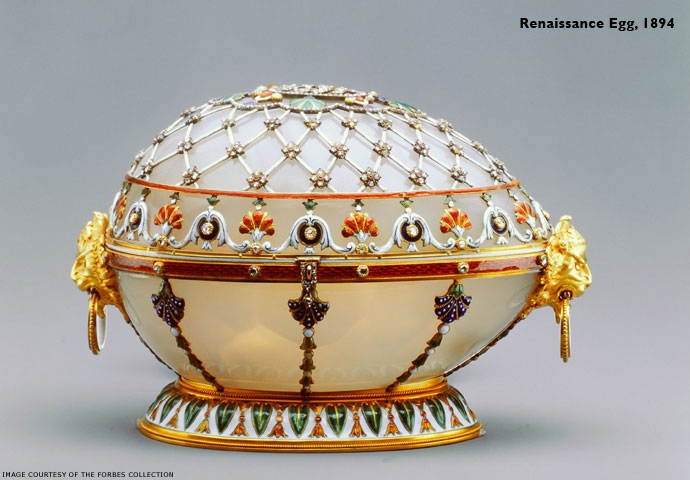
“Renaissance Egg”, photo: Forbes Collection (now Vekselberg Collection) via Fabergé.com
– 1895 : “Egg with a rose” – Vekselberg Collection in St Petersburg (FI)
“Egg with twelve monograms” – The Hillwood Museum in Washington D.C. (FI)

“Rose Egg”, photo: Forbes Collection (now Vekselberg Collection) via Fabergé.com
– 1896 :“Egg with revolving miniatures” – Virginia Museum of Fine Art in Richmond (FI)
“Egg with portraits of Alexander III” – Lost (FI)
– 1897 : “Coronation Egg” – Vekselberg Collection in Saint Petersburg (FI)
“Purple Egg” – Lost except for the surprise which is kept in the Vekselberg Collection in St. Petersburg (FI)
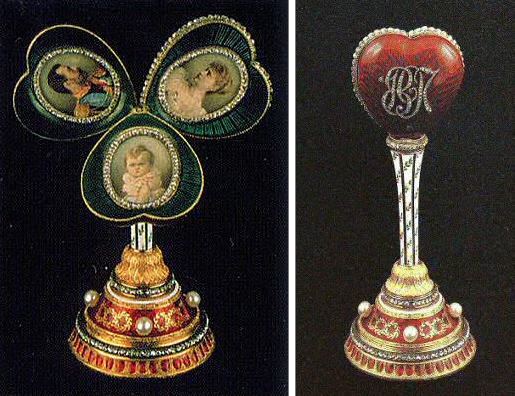
Surprise of the Purple Egg. This one measures just over 8 cm. Photo: Miek’s
– 1898:“Egg with Pelican” – Virginia Museum of Fine Art in Richmond (FI)
“Egg with lily of the valley” – Vekselberg Collection in St. Petersburg (FI)
“Egg with a hen” – Vekselberg Collection in Saint Petersburg (FK)
– 1899 : “Lily of the valley egg” – Kremlin Museum in Moscow (FI)
“Egg with pansies” – Private collection not located (FI)
“Egg with twelve panels” – The Royal Collection in London (FK)
“Egg with spring flowers” (1899 – 1903) – Vekselberg Collection in St Petersburg (A)
– 1900 : “Egg with cuckoo” – Vekselberg Collection in St. Petersburg (FI)
“Egg with the Trans-Siberian Railway” – Kremlin Museum in Moscow (FI)
“Egg with a pine cone” – Joan Krok Collection, USA (FK)
-1901 : “Egg with a basket of wild flowers” – Royal Collection in London (FI)
“Egg with Gatchina Palace” – The Walters Art Museum in Baltimore (FI)
“Egg with apple blossoms” – Private collection, Liechtenstein (FK)

Egg with apple blossoms, private collection. Photo: credit unknown
– 1902: “Nephrite Empire Egg” – Lost (FI)
“Egg with shamrocks” – Kremlin Museum, Moscow (FI)
“Rocaille egg” – Private collection, USA (FK)
“Pink egg with snake” (made for the Duchess of Marlborough) – Vekselberg Collection in St. Petersburg (A)
“Rothschild egg” – Russian National Museum in St. Petersburg (A)
– 1903:“Egg of Peter the Great” – Virginia Museum of Fine Art in Richmond (FI)
“Danish Jubilee Egg” – Lost (FI)
“Candy Egg” – Private collection, USA (FK)
– 1904 : “Chanteclair Egg” – Private collection, USA (FK)
– 1905: no commissions
– 1906: “Egg at the Uspensky Cathedral” – Kremlin Museum, Moscow (FI)
“Egg with Swan” – Edouard and Maurice Sandoz Foundation, Switzerland (FI)
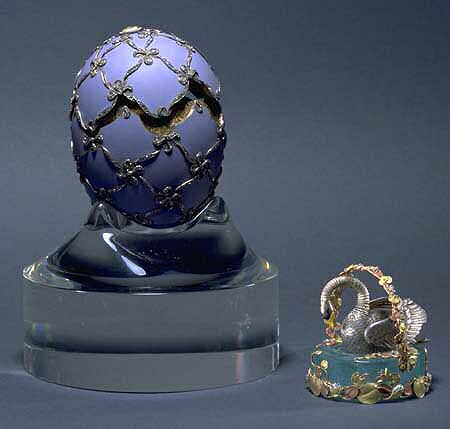
Egg with swan, Sandoz collection. Photo: Sandoz Collection
– 1907 :“Egg with Rose Lattice” – The Walters Art Museum in Baltimore (FI)
“Egg with trophies of love” – Private collection, USA (FI)
1907: “Egg Youssopov” – Collection Édouard and Maurice Sandoz, Switzerland (A)
– 1908: “Egg at the Alexander Palace” – Kremlin Museum, Moscow (FI)
“Egg with peacock” – Edouard and Maurice Sandoz Foundation, Switzerland (FI)

Egg with peacock, Sandoz collection. Photo: DR
– 1909: “Egg with Standart” – Kremlin Museum, Moscow (FI)
“Commemorative egg in honour of Tsar Alexander III” – Lost (FI)
– 1910 :“Egg with a colonnaded clock” – Royal Collection in London (FI)
“Equestrian egg of Tsar Alexander III” – Kremlin Museum in Moscow (FI)
– 1911: “Egg of the 15th anniversary” – Vekselberg Collection in St. Petersburg (FI)
“Egg with orange tree” – Vekselberg Collection in St. Petersburg (FI)

“Egg with orange tree”, Vekselberg collection. Photo: Dybala photo.
– 1912: “Napoleonic Egg” – Mathilda Gelding Gray Foundation (currently on display at the Metropolitan Museum of Art in New York) (FI)
“Czarevich Egg” – Virginia Museum of Fine Art in Richmond (FI)
– 1913 : “Romanov Tercentenary Egg” – Kremlin Museum in Moscow (FI)
“Winter Egg” – Private collection, Qatar (FI)

Winter Egg, private collection. Photo: credit unknown.
– 1914:“Easter Egg” – Royal Collection in London (FI)
“Grisaille Egg” – The Hillwood Museum in Washington D.C. (FI)
“Nobel Egg” – Private collection, France (A)
– 1915 :“Red Cross Egg” – Virginia Museum of Fine Art in Richmond (FI)
1915 : “Red Cross egg with resurrection tryptic” – Cleveland Museum of Art (FI)
– 1916 : “Military egg in steel” – Kremlin Museum in Moscow (FI)
1916 : “Egg of the Order of St. George” – Vekselberg Collection in St. Petersburg (FI)
– 1917:“Constellation egg” (unfinished)* – Moscow Mineralogical Museum (FI)
“Constellation egg” (unfinished)* – Ivanov’s Farbergé Museum in Baden-Baden (FI)
“Birch egg” – Ivanov’s Farbergé Museum in Baden-Baden (FI)
* about the two “constellation” eggs, perhaps they are in fact a single separate set at the Revolution. But this is not certain.
See you soon!
Sources: wikipedia pages“Fabergé Egg” and“Œuf de Fabergé” and personal research.
Ps: if you have any other information, don’t hesitate to put it in the comments, I’ll update the article by mentioning the contributors.






